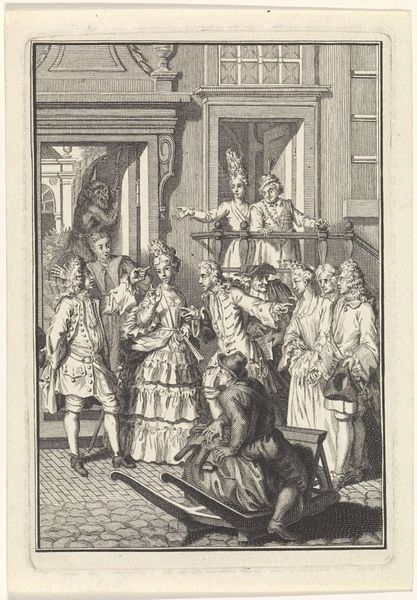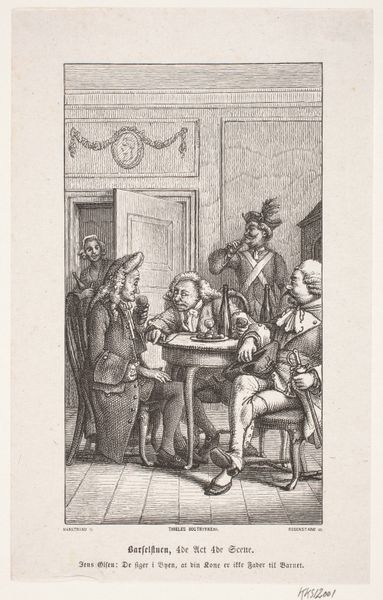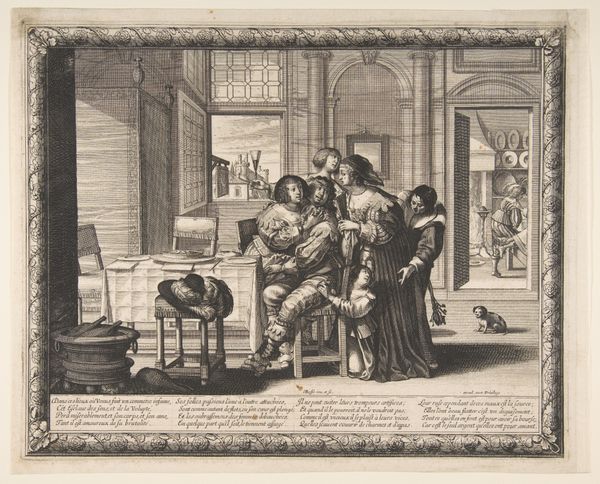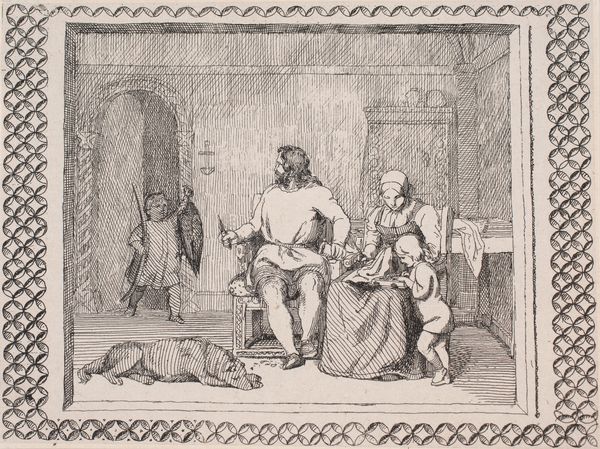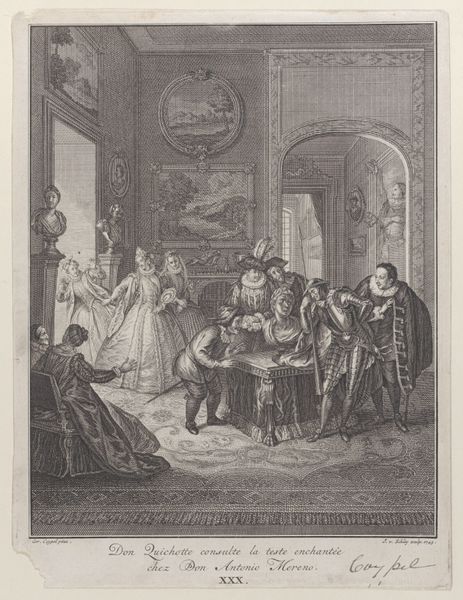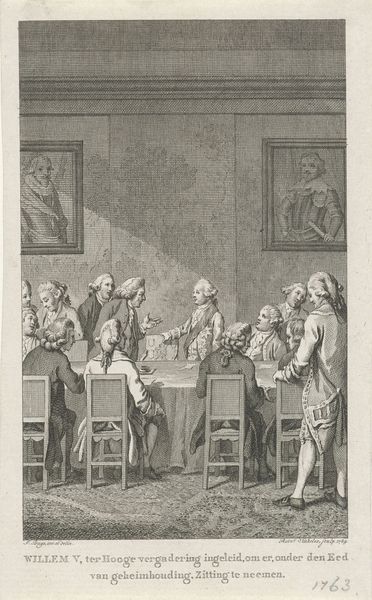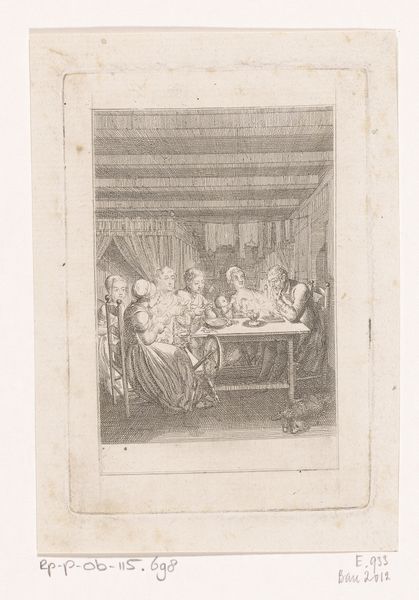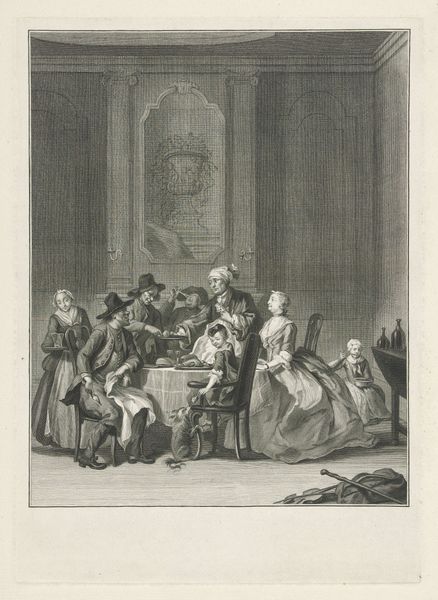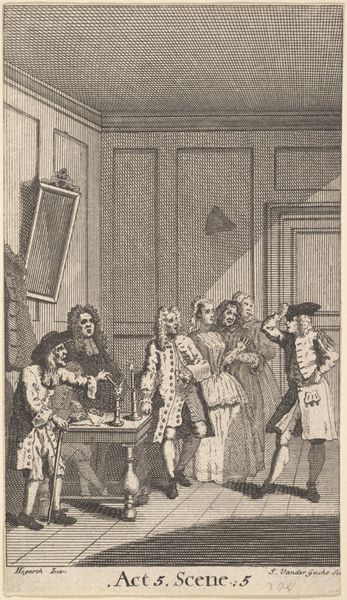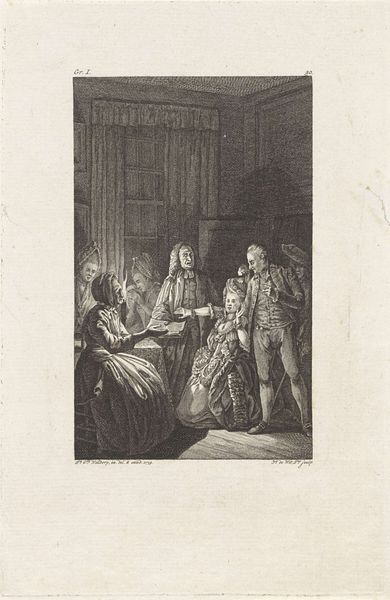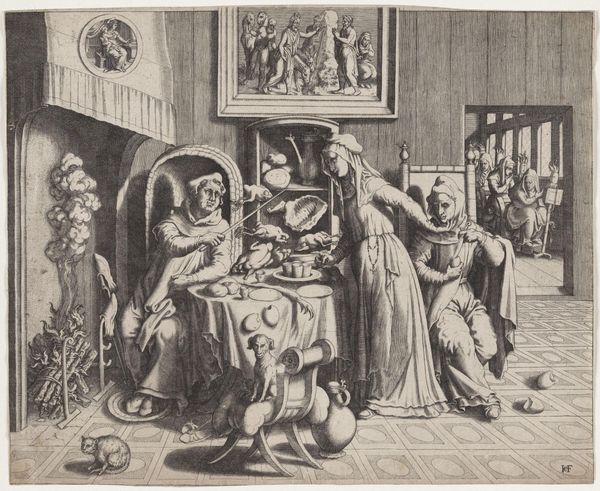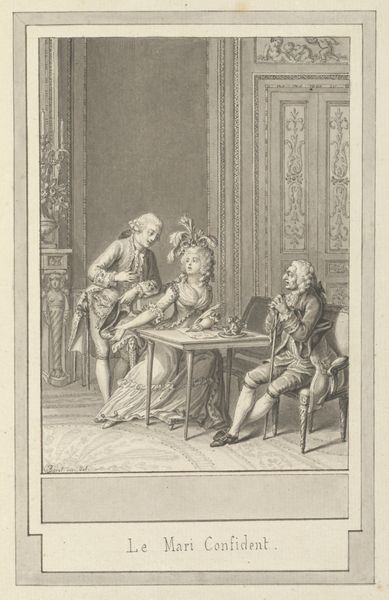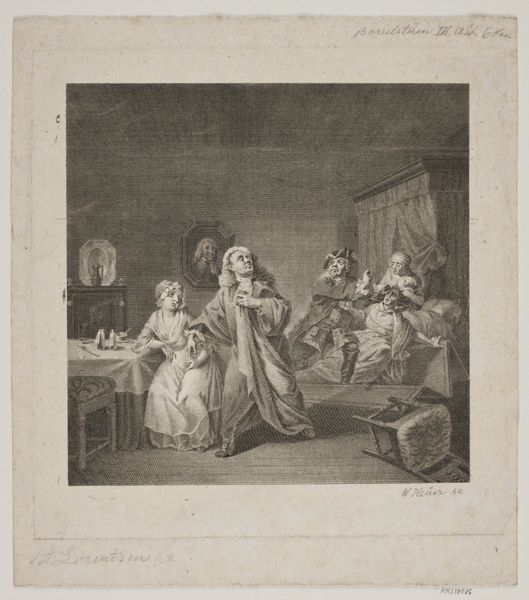
Las Meninas: the family of Philip IV in the foreground with the Infanta Margarita in the centre, Velázquez standing painting at left, the King and Queen reflected in the mirror in the background 1799
0:00
0:00
Dimensions: 20 1/16 × 15 15/16 in. (51 × 40.5 cm)
Copyright: Public Domain
Curator: The emotional weight of this piece is undeniable. I feel instantly drawn into a specific moment, despite it being rendered in a very controlled medium. Editor: Indeed. What we have here is a 1799 engraving by Pierre Audouin, currently residing at the Metropolitan Museum of Art, inspired by Velázquez’s iconic "Las Meninas." It aims to capture not just a portrait, but a specific atmosphere, almost like a family snapshot but in this formal Baroque style. Curator: Exactly! Even in this reproduction, the visual echoes of the original masterpiece speak volumes. The Infanta Margarita at the center exudes a regal presence. Though the medium here is engraving, you can still get a sense of how light and shadow are deployed in that original composition, contributing to a certain mood. It’s a masterful translation into black and white. Editor: It makes you wonder about the intention behind this copy. Why create an engraving of such a monumental painting almost a century and a half after its creation? Consider the context: printmaking allowed for a far wider dissemination of imagery than ever before. This makes the painting more widely accessible beyond the court. It shapes the reception of a canonical work. Curator: So, this image served to imprint the symbolic weight of the Spanish court onto a broader public consciousness? Editor: Precisely! The very act of reproducing "Las Meninas," a painting so concerned with the politics of representation, speaks to how institutions and artists worked to canonize and distribute artistic authority. Notice the almost scientific attention given to rendering details within this engraving. Curator: Absolutely. The symbolic weight still rests in this depiction of the key figures: The gaze of the King and Queen reflected in the mirror, the artist himself visible… Audouin ensures none of it is lost in translation. I feel the visual encoding is extremely important for the era, and beyond. Editor: Yes. By examining these reproduced forms of famous artwork we reveal how our art history is constructed, perceived and disseminated by cultural forces over time. Curator: I agree completely; viewing it from that perspective enriches this print for me. Editor: And considering its availability within a museum collection broadens the discourse and reveals its role in the shaping of artistic legacy.
Comments
No comments
Be the first to comment and join the conversation on the ultimate creative platform.
